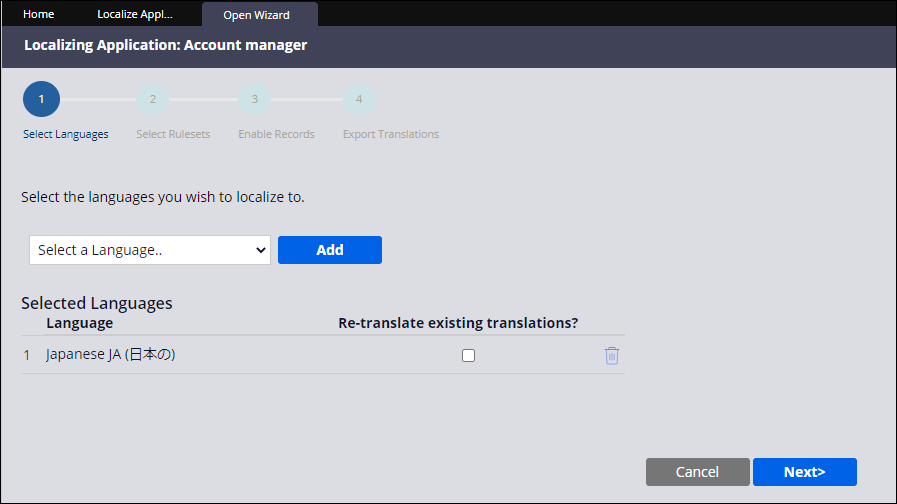Localizing your application helps users work in their preferred language, which improves their experience and ensures a better understanding of the product. By localizing an application, you can expand your operations to new markets regardless of language barriers.
Localization adapts your application for a specific language or region by translating the
text and converting locale-specific components, such as currency symbols and calendar
settings. During the localization process, the text in your application is translated into the
target language, and imported back into Pega Platform. Text that you can
localize includes labels, captions, tooltips, and instructions that appear in user-facing
components, such as harnesses, sections, flow actions, messages, and portals. You can also
localize the HTML text that is used in HTML paragraphs, correspondences, and fragments.

Discover more about localization in the following articles:
- Preparing your application for translation
Reduce the time that is required to translate your application by running a pre-localization check. By improving application readiness you can avoid processing errors and speed up the work of the localization wizard.
- Installing Pega language packs
Make your application available to users in various locations by using Pega language packs, which provide a translated ruleset with values of fields that typically appear in every application, such as button labels or prompts.
- Creating a translation package
Expand the user base of your application by translating it into different languages. By creating a translation package, you bundle all the text in your application into a single .zip file, which translators can then process more conveniently.
- Preparing a translation package for a translator
Reduce translation time and costs by reviewing the contents of the translation package before you send it to the translator. For example, you can remove unnecessary or untranslatable data from the TextToTranslate.xml spreadsheet, such as class names.
- Importing translations
Create multiple language versions of your application by localizing translation packages and then importing them into your application. You can upload a newly translated package by using the localization wizard, which offers a convenient way to manage language versions of your application.
- Testing the translation package
Check whether your translation is accurate and appears correctly in the user interface by using the localization inspector tool. You can use the localization inspector to review and update field value rules in language-specific rulesets after you import a translation.

